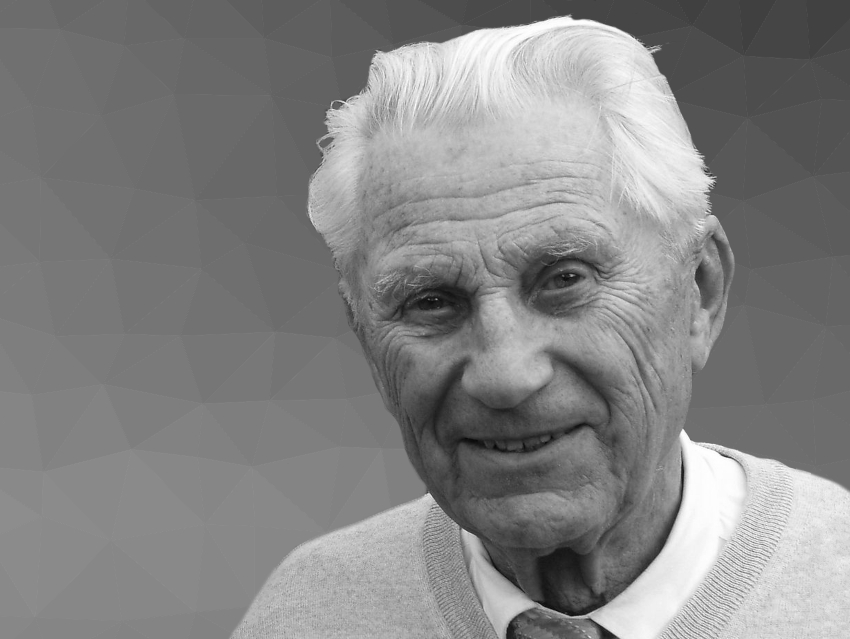Professor Siegfried Hünig, University of Würzburg, Germany, passed away on March 24, 2021. He was a versatile and creative chemist well-known for the eponymous Hünig’s base, or N,N-diisopropylethylamine—a sterically hindered base that is a poor nucleophile, often used in alkylation reactions.
Hünigs’s research focused on organic chemistry. His interests included, for example, the synthesis of dyes, the reactivity of methylene compounds, the chemistry of diimine, solvatochromic compounds, the acylation of enamines, triazenium salts, nucleophilic acylations, and so-called “organic metals”.
Siegfried Helmut Hünig was born on April 3, 1921, in Radebeul/Dresden, Germany. He studied chemistry at the Technical University of Dresden, where he received his Ph.D. in 1943. He completed his habilitation in 1950 at the University of Marburg, Germany, and became a Lecturer there. In 1960, Hünig joined the University of Munich, Germany, as Associate Professor of Organic Chemistry. In 1961, he moved to Würzburg as Full Professor and remained there until his retirement in 1987.
Among other honors, Hünig received the Adolf von Baeyer Memorial Medal from the Gesellschaft Deutscher Chemiker (GDCh, German Chemical Society) in 1967, the J. Heyrovský Honorary Medal for Merit in the Chemical Sciences in 1996, and several honorary doctorates. He was a Member of the Free European Academy of Sciences, Driebergen, and the German National Academy of Sciences Leopoldina.
Selected Publications
- Synthesen mit Enaminen, I. Acylierung mit Carbonsäurechloriden (in German),
S. Hünig, E. Benzing, E. Lücke,
Chem. Ber. 1957, 90, 2833–2840.
https://doi.org/10.1002/cber.19570901217 - Spezifische Protonenacceptoren als Hilfsbasen bei Alkylierungs- und Dehydrohalogenierungsreaktionen (in German),
S. Hünig, M. Kiessel,
Chem. Ber. 1958, 91, 380–392.
https://doi.org/10.1002/cber.19580910223 - The Modes of Reaction of Ambident Cations,
S. Hünig,
Angew. Chem. Int. Ed. Engl. 1964, 3, 548–560.
https://doi.org/10.1002/anie.196405481 - The Chemistry of Diimine,
S. Hünig, H. R. Müller, W. Thier,
Angew. Chem. In. Ed. Engl. 1965, 4, 271–280.
https://doi.org/10.1002/anie.196502711 - Multistage Organic Redox Systems—A General Structural Principle,
K. Deuchert, S. Hünig,
Angew. Chem. Int. Ed. Engl. 1978, 17, 875–886.
https://doi.org/10.1002/anie.197808753 - A Radical Anion Salt of 2,5-Dimethyl-N,N′-dicyanoquinonediimine with Extremely High Electrical Conductivity,
A. Aumüller, P. Erk, G. Klebe, S. Hünig, J. U. von Schütz, H.-P. Werner,
Angew. Chem. Int. Ed. Engl. 1986, 25, 740–741.
https://doi.org/10.1002/anie.198607401 - The organic metal (Me2-DCNQI)2Cu: Dramatic changes in solid-state properties and crystal structure due to secondary deuterium effects,
K. Sinzger, S. Huenig, M. Jopp, D. Bauer, W. Bietsch, J. U. von Schuetz, H. C. Wolf, R. K. Kremer, T. Metzenthin,
J. Am. Chem. Soc. 1993, 115, 7696–7705.
https://doi.org/10.1021/ja00070a013 - Arbeitsmethoden in der Organischen Chemie, Lehmanns Media,
S. Hünig, P. Kreitmeier, G. Märkl, J. Sauer,
Lehmanns, Berlin, 2007, ISBN 978-3865412348
Also of Interest
- A Homage to Siegfried Hünig and His Research,
Hans‐Ulrich Reissig,
Angew. Chem. Int. Ed. 2021
https://doi.org/10.1002/anie.202101550




